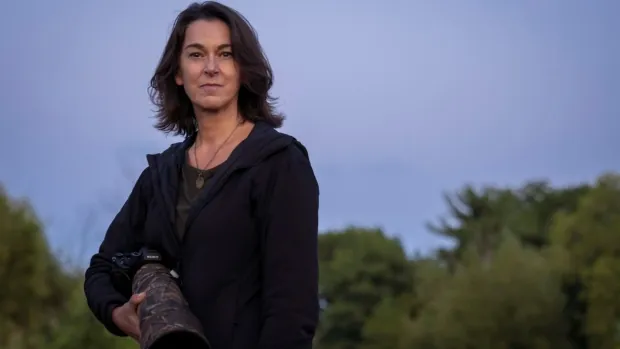
Silent Skies: Toronto Photographer's Award-Winning Shot of 4,000 Bird Deaths Ignites Call for Change
2024-09-28
Overview
In a haunting yet profoundly impactful photograph, Toronto conservation photojournalist Patricia Homonylo captures the stark reality of bird fatalities caused by urban architecture. The image, titled "When Worlds Collide," features a wild turkey surrounded by 4,000 deceased birds, ranging from kingfishers to blue jays—an alarming representation of the mass deaths occurring when birds collide with glass windows.
Recognition and Display
Homonylo's striking composition won her the prestigious title of Bird Photographer of the Year, triumphing over a staggering 23,000 entries from across the globe. The bodies of these birds were collected over the course of a year from a few city blocks in Toronto and Mississauga and were carefully arranged by volunteers from Fatal Light Awareness Program (FLAP) Canada to create a powerful visual display.
Emotional Impact
Reflecting on the initiative, Homonylo expressed the emotional weight carried by the exhibit, stating, “It’s closure for the volunteers. It honors the birds we’ve lost… it’s like having a wake or a mourning.” The annual gathering not only serves to remember the avian victims but also aims to raise awareness concerning the preventable nature of these deaths.
A Call for Change
From her elevated position on a ladder, camera nestled on a monopod, Homonylo confronts viewers with the painful juxtaposition of beauty and tragedy encapsulated in her work. She passionately calls for societal change, compelling people to demand "bird-safe cities" from their governments. “Imagine a world without their song,” she urges, emphasizing the grave threat that current urban design poses to migratory bird populations.
Statistics of Avian Mortality
Statistics reveal a shocking scale of avian mortality due to window collisions. Environment Canada estimates that anywhere between 16 to 42 million birds die each year from such incidents, with FLAP Canada noting over 700,000 migratory birds have been recorded as casualties so far this year—a number that continues to rise. In contrast, the U.S. faces an even grimmer reality, losing up to 988 million birds annually.
Causes of the Crisis
FLAP's co-founder and executive director, Michael Mesure, attributes this heart-wrenching crisis to the characteristics of modern glass, which can either create an illusion of open space or reflect surrounding environments. “We've all experienced this at our homes, cottages, or workplaces,” Mesure noted, highlighting how this issue affects various bird species, not just during migration seasons but throughout the entire year. This makes window collisions the second-leading cause of bird death on a national scale.
Potential Solutions
Moreover, Mesure suggests that the solution is both simple and achievable. “Applying visual markers to windows can reduce the threat to birds by 80 to 90 percent,” he asserts, emphasizing the importance of making windows more visible to birds. Toronto has already taken steps in this direction by implementing bird-friendly development guidelines since 2007, aiming to mitigate the dangers posed by glass and reduce light pollution that disrupts avian navigation.
Regulatory Gaps
Under current Canadian legislation, it is prohibited for buildings to cause harm to birds through reflecting light. Yet despite these advancements, a significant gap remains—most bird fatalities occur at existing structures where regulations are lacking. As Mesure highlights, “While the standards set in Toronto are being replicated across North America, the bulk of the problem lies with the older buildings that remain unregulated.
Conclusion
Homonylo's compelling photography not only graces galleries but also serves as a rallying cry, uniting conservationists and the public in a shared mission to safeguard our feathered friends. In a world increasingly dominated by concrete and glass, her work invites reflection on the silent toll taken on wildlife, urging immediate action to preserve the songs of the skies.









 Brasil (PT)
Brasil (PT)
 Canada (EN)
Canada (EN)
 Chile (ES)
Chile (ES)
 España (ES)
España (ES)
 France (FR)
France (FR)
 Hong Kong (EN)
Hong Kong (EN)
 Italia (IT)
Italia (IT)
 日本 (JA)
日本 (JA)
 Magyarország (HU)
Magyarország (HU)
 Norge (NO)
Norge (NO)
 Polska (PL)
Polska (PL)
 Schweiz (DE)
Schweiz (DE)
 Singapore (EN)
Singapore (EN)
 Sverige (SV)
Sverige (SV)
 Suomi (FI)
Suomi (FI)
 Türkiye (TR)
Türkiye (TR)